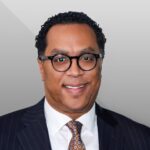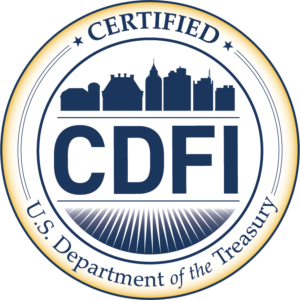February 2021 marked three years since the Bronze Valley Conference that launched an organization dedicated to creating opportunity, realizing potential and nurturing places where economic growth and cultural progress go hand-in-hand to strengthen entire communities. Recently, Bronze Valley President and CEO Neill S. Wright took some time to discuss the organization’s success, its challenges and how it will continue to help ensure a more diverse, inclusive and equitable future.
Three years in, what are Bronze Valley’s most notable accomplishments to date?

Neill S. Wright, President & CEO of Bronze Valley
Wright: We’ve made a great deal of progress relative to our mission. Among the most notable accomplishments, Bronze Valley is the sole CDFI [Community Development Financial Institution] venture fund in Alabama. We’ve also launched the Bronze Valley Accelerator, and just recently completed our second cohort. Lastly, we have a growing portfolio of companies in which we invested capital, helping to catalyze wonderful ideation into scalable commercial enterprises.
What are the biggest challenges Bronze Valley has confronted — or which it continues to confront?
Wright: Like most everyone, we have been faced with challenges around the ongoing global public health crisis. But we’ve been able to pivot our programming, which includes pre- and post-investment support services, to a virtual offering which continues to pay dividends. Of course, fundraising has become incredibly challenging, given the demand for direct pandemic relief.
We have been quite proud of the resilience shown by the companies we interact with. It is a further validation of our focus on this often overlooked but burgeoning group of entrepreneurs.
What are your thoughts relative to the longer-term effects of the Covid-19 pandemic?
Wright: Certainly, we recognize both the challenges and the opportunities that have arisen from the pandemic, and that will continue to arise. We know that the impacts of the pandemic are, and will be, vast. In many ways, it will permanently alter our lives, including in the workplace. Once we’re past the immediate dangers and the measures in place to deal with them, Bronze Valley will continue to look forward in anticipation of the resulting changes and to adapt as necessary in response to them.
How has Bronze Valley’s approach to its mission evolved over time?
Wright: We continue to evolve and iterate. In many ways, we are very similar to a startup company. We’re solving for a huge problem that impacts geographies across the country — the inequitable distribution of venture capital to high-growth companies led by underrepresented founders — so it’s imperative that we are creative, adaptable and efficient in responding to those needs.
The data affirms that there is a multi-trillion-dollar opportunity cost associated with the pervasive underinvestment in this segment of the market. The business case is beyond compelling. However, the system that was created to fund venture-scale startups is a complex aggregation of networks that generally embraces the status quo. With that in mind, we are determined to lead with a thoughtful approach and solutions that assist in changing the face of high-growth entrepreneurship.
Why is Bronze Valley a model for substantively addressing issues of diversity and inclusion?
Wright: Our work generates a series of outcomes that enhance diversity and inclusion. Beyond democratizing access to private capital markets, a derivative outcome is addressing the wealth gap, specifically at the upper end of the continuum.
So what does success look like? What are the benchmarks?
Wright: Success looks like underrepresented entrepreneurs accessing capital, connecting to networks, growing enterprises, employing similarly situated individuals and impacting overlooked communities, exiting these ventures and generating wealth-creation events for others. This wealth-creation cycle should then become repeatable and predictable, scaling across multiple geographies. The result becomes a dramatic improvement in the quality of life for communities of color.


